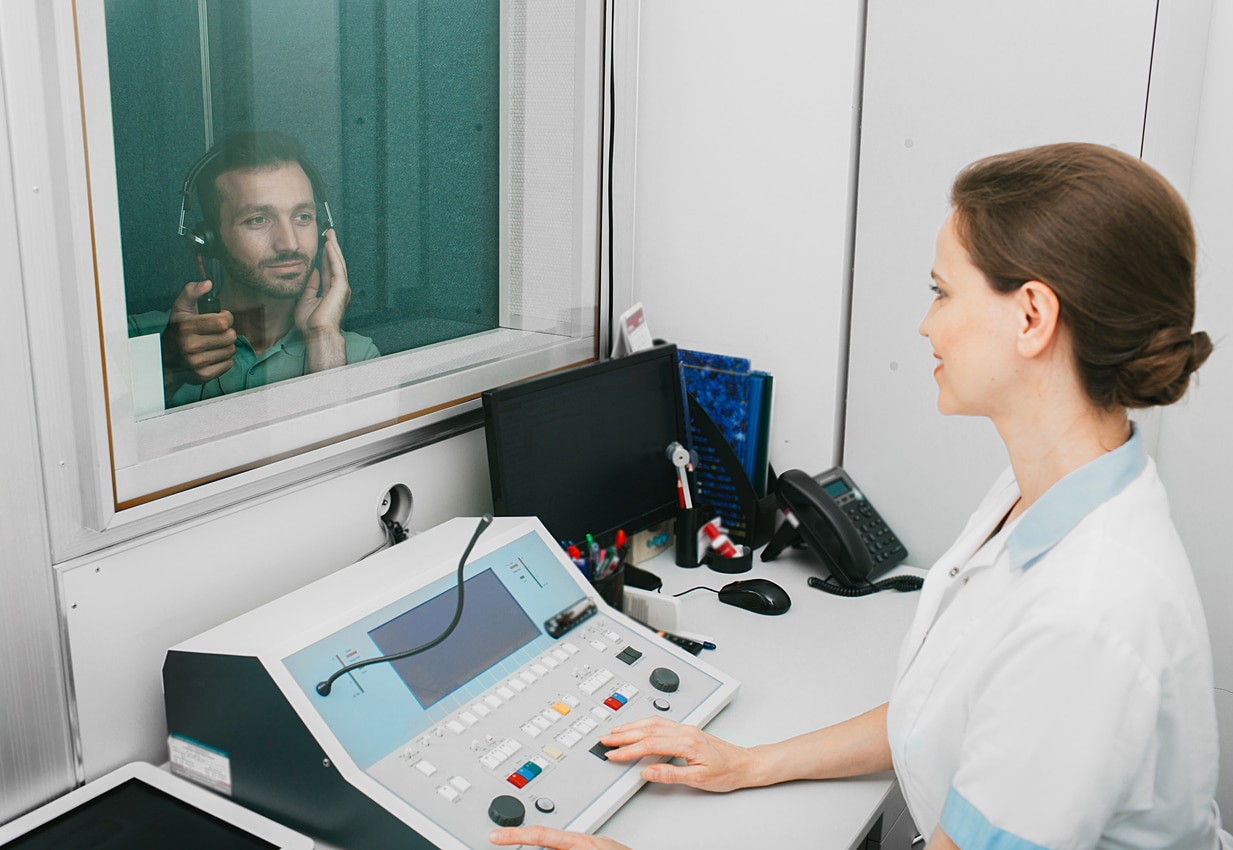A bone conduction test is a diagnostic procedure that helps determine the type of hearing loss an individual has, whether it’s sensorineural or conductive. This test is performed by generating vibrations through the skull to test hearing capabilities, specifically to ascertain if there’s a problem in the outer or middle ear. It’s usually administered alongside an air conduction test, also known as a pure-tone test, which is a standard method for assessing hearing loss.
The procedure is safe and painless. Here’s an overview of what you can expect.
Understanding the Bone Conduction Test

The bone conduction test is typically conducted in an acoustically treated booth following an air conduction test, the more traditional form of hearing assessment. After the initial test, the hearing specialist will switch the standard headphones for a special headband equipped with a bone oscillator, which is placed behind the ear on the mastoid bone. You might also be asked to wear earphones.
As the test commences, the specialist will ask you to signal by raising your hand or pressing a button each time you detect a sound. These sounds will be played at various pitches and volumes to identify the presence and degree of hearing loss.
Mechanism of the Test
The test operates by transmitting sound directly through the mastoid bone, thus circumventing the outer and middle ear and pinpointing potential hearing loss areas. The faintest sounds you can hear through the bone oscillator provide the audiologist with information about your level of hearing loss. Difficulty in hearing these sounds can indicate sensorineural hearing loss, which is generally permanent. Conversely, issues detected by the air conduction test may point to conductive hearing loss.
If sensorineural hearing loss is diagnosed, your audiologist will discuss symptom management strategies with you. This may involve using hearing aids, which can significantly enhance your ability to hear conversations and stay connected socially.
For further information on hearing health or to book a hearing evaluation, reach out to Center for Hearing & Speech to schedule an appointment.